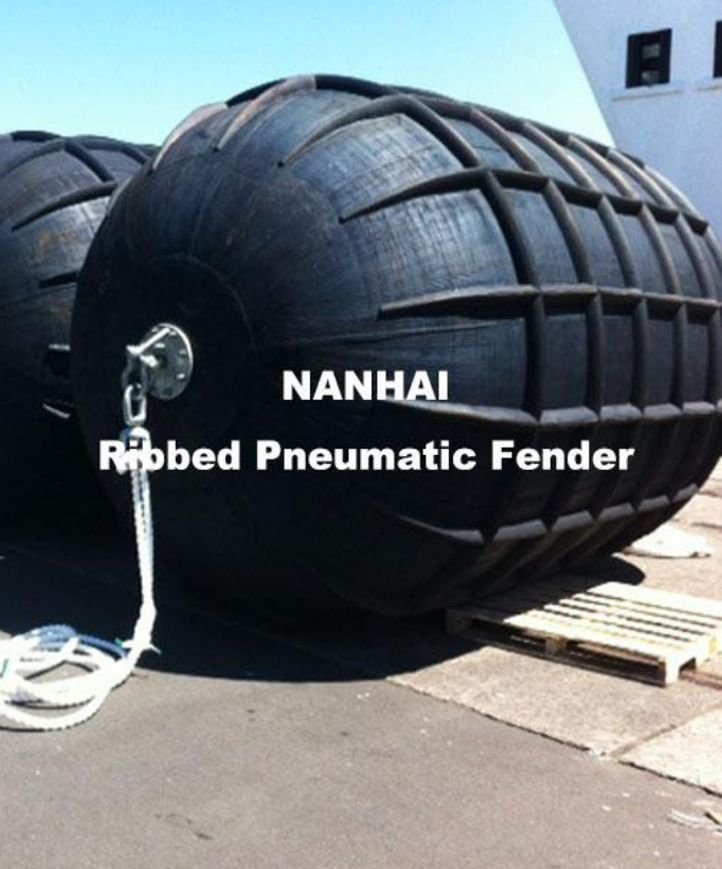Foam Filled Fenders Design & Custom Guide
07/24/2025Application areas of roller fenders
07/24/2025Advantages of ribbed pneumatic fenders
1. Introduction
When it comes to keeping ships and docks safe during mooring, choosing the right fender really matters. Ribbed pneumatic fenders are a smart upgrade from standard ones—they have raised ribs on the surface that help with grip and protection. You’ll often see them used in busy ports, offshore platforms, or during ship-to-ship (STS) operations. In this article, we’ll break down what they are, why they’re different, and why so many marine pros prefer them.

2. What Are Ribbed Pneumatic Fenders?
Ribbed pneumatic fenders are made of rubber and filled with air, like other pneumatic fenders. However, they have something extra—rubber ribs on the surface. These ribs are built into the body during the molding process. They act like a protective layer, replacing the heavy chain and tire nets found on standard fenders.
These ribs give the fender a rough surface. That means the fender grips better during contact, and it doesn’t slip or roll as easily. They also protect the main body from damage caused by rough or sharp surfaces.
Ribbed pneumatic fenders are usually lighter than chain-net types. They are also easier to install and move. Despite being lighter, they can still absorb strong impacts and reduce damage during mooring or docking.
3. Main Advantages of Ribbed Pneumatic Fenders
✔ Lightweight and Easy to Use
Ribbed pneumatic fenders are lighter than those with chains and tires. That makes them easier to carry, install, and store.
✔ Strong Impact Absorption
The air-filled body and ribbed surface work together to absorb energy from large vessels. This helps prevent damage to both the ship and the dock.
✔ Low Reaction Force
These fenders are soft during contact. They reduce stress on ship hulls, making them great for oil tankers, LNG ships, and navy vessels.
✔ Long Lifespan
The ribs protect the body from cuts and wear. The fender lasts longer and needs less repair.
✔ Lower Maintenance Costs
No chains or tires mean fewer parts to replace. The smooth rubber surface is easy to clean and check.
✔ Fits Many Uses
You can use ribbed pneumatic fenders in many places—ports, docks, offshore rigs, and STS operations. They work well with all kinds of ships.
4. Ribbed vs. Non-Ribbed Pneumatic Fenders: A Simple Comparison
| Feature | Chain-Tire Net Fender | Sling-Type Fender | Ribbed Fender |
|---|---|---|---|
| Weight | Heavy | Very light | Light |
| Surface Protection | Strong (chains & tires) | Weak | Strong (rubber ribs) |
| Energy Absorption | High | Medium | High |
| Reaction Force | High | Low | Low |
| Maintenance | Complex | Easy | Easy |
| Setup Time | Long | Short | Short |
| Applications | All ships | Small ships | All ships & platforms |
As you can see, ribbed fenders offer a great balance between performance and ease of use. They are lighter than chain-net types and stronger than sling types. Many marine experts choose them for reliable and simple mooring protection.
5. Conclusion
Ribbed pneumatic fenders combine the best of both worlds. They are strong, light, and easy to use. The rubber ribs give them extra protection and better grip. These fenders reduce damage, lower costs, and work well in many situations.
If you’re looking for a reliable, low-maintenance solution for mooring, ribbed pneumatic fenders are a smart choice. Need help choosing the right size or setup? Contact NANHAI today — our team is ready to help you find the perfect fender for your ship, dock, or offshore project.
FAQs
Q1: What makes ribbed pneumatic fenders different from regular pneumatic fenders?
Ribbed pneumatic fenders have raised rubber ribs on the surface. These ribs add grip, protect the body, and replace the need for a heavy chain and tire net.
Q2: Are ribbed pneumatic fenders better than chain-net types?
They can be! Ribbed fenders are lighter, easier to handle, and need less maintenance. For many ships and ports, they offer the same protection with less hassle.
Q3: Do the ribs wear out quickly?
No. The ribs are made from strong rubber and molded right into the fender body. They last a long time and help protect the main structure.
Q4: Can I use ribbed pneumatic fenders for ship-to-ship transfers?
Yes! They work great for STS operations. The ribs help prevent slipping and reduce damage during contact.
Q5: Are they easy to install and store?
Very. Ribbed pneumatic fenders are lighter than chain-type fenders, so you can move, install, and store them with less effort.
Q6: Can I customize the size or pressure rating?
Yes, most manufacturers offer custom sizes, pressure ratings, and valve types to match your vessel or dock needs.
Q7: Who uses ribbed pneumatic fenders?
They’re used by commercial ports, offshore platforms, navy ships, oil tankers, LNG vessels, and more.
